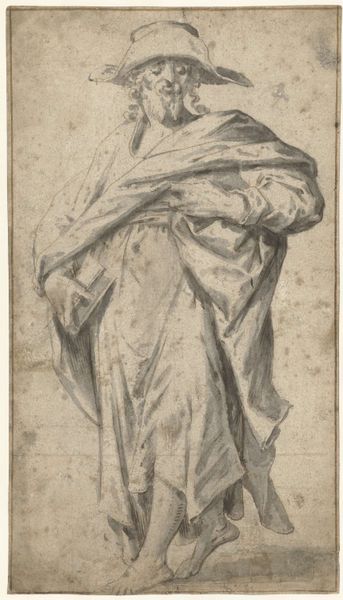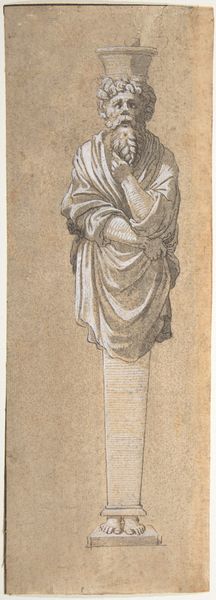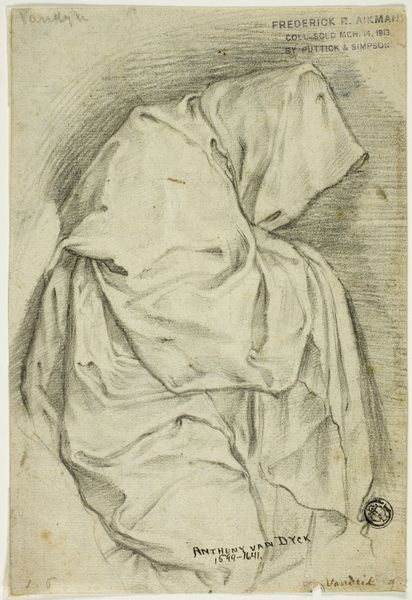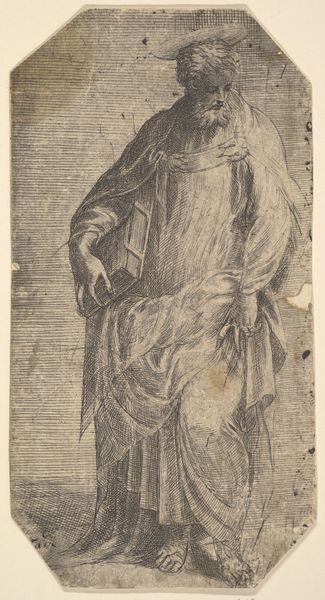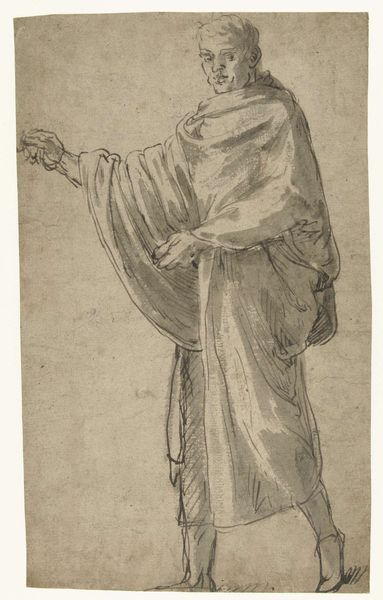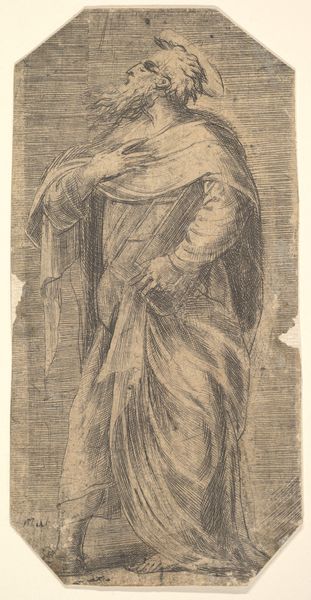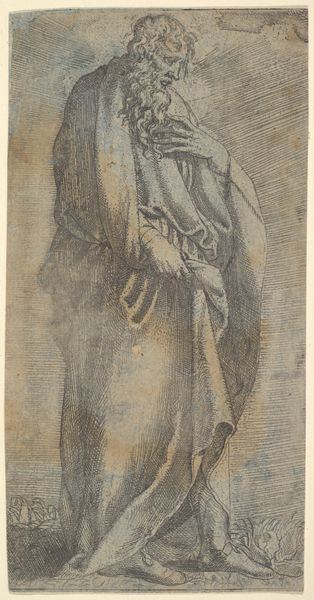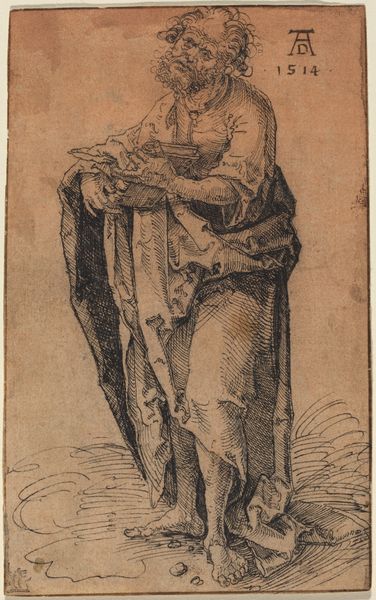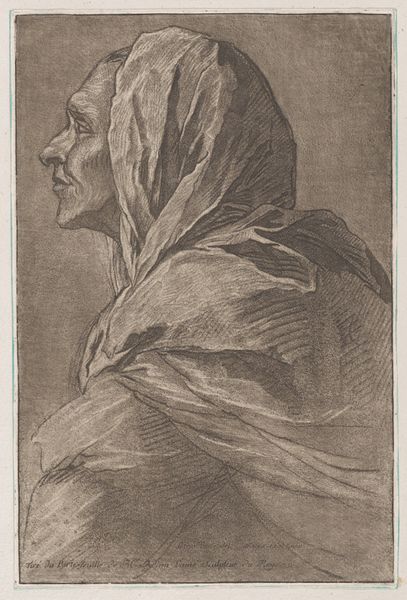
A Draped Bearded Man Looking Up 1780 - 1849
0:00
0:00
drawing, print, ink
#
portrait
#
drawing
#
neoclassicism
# print
#
figuration
#
ink
#
pencil drawing
#
history-painting
#
academic-art
Dimensions: sheet: 8 1/4 x 3 3/8 in. (20.9 x 8.5 cm)
Copyright: Public Domain
Curator: Looking at this drawing, the sheer volume of fabric really catches my attention first. Editor: Indeed. We’re observing “A Draped Bearded Man Looking Up,” attributed to David-Pierre Giottino Humbert de Superville, created sometime between 1780 and 1849. The medium is ink, most likely applied with a quill pen. It’s currently held at the Metropolitan Museum of Art. Curator: The lines seem almost frantic, like the artist was racing to capture the way light hit each fold and crease. It is fascinating to observe the material being represented here through quick strokes of labor and care, as the making seems just as important. What’s your impression of it compositionally? Editor: Well, the figure is situated quite centrally. The upward gaze, coupled with the dramatic drapery, certainly evokes a sense of neoclassical grandeur, doesn't it? There's an emphasis on idealized form and what could be construed as inherent nobility. Curator: Right. The drapery itself plays a crucial role here. It both conceals and reveals the body, creating this play between modesty and...almost an invitation? You think about the mills, maybe in France, working overtime to feed fabric to artists who need this heavy presence. I am curious what kind of figure would wear these, if any at all. Editor: It speaks volumes, the drapery! Its careful arrangement emphasizes the figure's stature, giving him an air of authority despite the unfinished quality of the work. It’s almost theatrical. And consider the semiotic implications – the flowing lines contrasting with the figure's relatively static pose to communicate ideas beyond a simple representation. Curator: I see it somewhat differently. I am considering the material means necessary for such artistry. Think about the conditions of manufacture inherent in the cloth and ink. Maybe these weren’t even important, and instead this art existed simply to flaunt skill and social standing. Editor: It's an intriguing dialogue between intention and execution, isn't it? The artist's hand, the classical references, the implied narrative. A truly compelling piece for analysis. Curator: Yes. Even to examine how materials, process and consumption come into play can say more about what art tries to display and achieve.
Comments
No comments
Be the first to comment and join the conversation on the ultimate creative platform.
